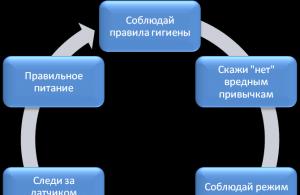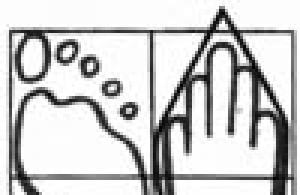First, let's remember what is OVERTAKING.
Rules. Section 1. “Overtaking” means overtaking one or more vehicles,related to the exit into the oncoming lane , and then return to the previously occupied lane.
That is, overtaking is always going into the oncoming lane, and going into the oncoming lane is allowed by the Rules
only in the following three cases.
Or it is a two-lane road with a broken center marking line.

Or it is a two-lane road with a combined center marking line.

Or it is a three-lane road with two longitudinal broken marking lines.
On such roads, as you already know, the middle lane can be used for overtaking by drivers from both directions.
Overtaking is undoubtedly the most dangerous of all maneuvers. Therefore, the Rules contain a number of strict restrictions that a driver who overtakes or only intends to overtake must follow.
General principles of safety when overtaking.
Rules. Section 11. Clause 11.1. Before starting overtaking, the driver must make sure that the lane he is going to enter is free at a distance sufficient for overtaking and that in the process of overtaking he will not endanger traffic and interfere with other participants. traffic.

In fact, this requirement of the Rules means that before making a decision on the possibility (or impossibility) of overtaking, the driver must do a lot of analytical work:
1. It is necessary to estimate the speed of the overtaken car.
2. It is necessary to estimate the speed of the oncoming vehicle and the distance to it.
3. It is necessary to assess the condition pavement(dry, wet, slippery).
4. It is necessary to remember the real dynamic possibilities own car(how responsive it is to the accelerator pedal).
It is allowed to start overtaking only if during the process of overtaking there is no problem.
not the slightest threat, neither for the oncoming one, nor for the one being overtaken!
The driver is prohibited from overtaking if the vehiclemoving ahead, overtakes or avoids an obstacle.
Moreover, taking care of safety, the Rules forbade overtaking from the moment the driver in front turned on the left direction indicators. And this is also stated in paragraph 11.2:
Rules. Section 11. Clause 11.2. The driver is prohibited from overtaking if the vehicle moving ahead along the same lane gave the signal to turn left.

What he is going to do is still unclear. Either he intends to start overtaking, or he goes around an obstacle, or he is preparing to turn left.
But in any case, from the moment he turned on the left turn indicators, it is dangerous for you to start overtaking, and therefore it is prohibited by the Rules.
But paragraph 11.2 does not end there either:
Rules. Section 11. Clause 11.2. The driver is prohibited from overtaking iffollowing him the vehicle has started overtaking.
Note! - In paragraph 11.2 of the Rules, so far it has been about a vehicle, moving ahead of you .
And according to the Rules, the one in front of you just needs to turn on the left “turn signals” to prohibit you from overtaking.
And here the one behind you , in accordance with paragraph 11.2 this alone is not enough. To prevent you from overtaking, the driver behind you, it is necessary not only to turn on the left turn signals, but also to start overtaking!
And this is logical! And that's why. The driver turns on the left turn indicators in the following cases:
but). Before you start overtaking;
b). Before proceeding to bypass the obstacle;
in). Before proceeding to turn left;
G). Before you start turning.

If he is ahead, then what difference does it make to you what he is going to do - in all cases you cannot start overtaking.

But if he is behind, then there is a difference. Now your task is to wait and see what he is going to do.
If he falls behind and turns left or turns around, you can overtake those in front.
But if he picks up speed and shifts to the left, then he is going to overtake you. In this case, the Rules oblige you to wait until he finishes his overtaking, and only after that you are allowed to start overtaking.
Commentary on the drawing. Get used to it slowly! – in the rearview mirror, the opposite is true. What is actually left is right in the mirror. And the picture in the mirror will be exactly the same as in our picture.
At the exam in the traffic police, one of you will get the following task:
|
1. Can. 2. It is possible if the driver of truck A is moving at a speed of less than 30 km/h. 3. It is forbidden. Task comment Sometimes I come across the fact that some of you do not understand which driver of which car we are talking about. And it's about the driver. passenger car sandwiched in the figure between two trucks. The authors of this problem believe that the driver of the truck driving behind not only turned on the left turn indicators, but also started to overtake (although this does not follow from the figure and the text of the question). But the correct answer is the third one. So you also assume that the truck driver has already started overtaking, otherwise you will make a mistake. |
Another most important moment.
The safety of overtaking depends not only on the actions of the overtaking person, but also on the actions of the person being overtaken. The driver, seeing that he is being overtaken, may be “offended” (this, unfortunately, happens) and will also press the accelerator pedal, preventing the overtaking person from completing the overtaking. But this is really dangerous, and therefore unacceptable! The rules formulated the requirements for the driver of the overtaken car as follows:
Rules. Section 11. Clause 11.3. The driver of the vehicle being overtaken is prohibited from preventing overtaking by increasing the speed or by other actions.
Note! – The rules do not oblige the driver of the vehicle being overtaken to give way to the overtaking vehicle (for example, when the overtaking vehicle returns to its lane). On the contrary, it is the overtaker who must take care not to "cut off" the overtaken.
Another thing is that the person being overtaken should not speed up when he is being overtaken. Or, say, turn on the left "turn signals", or shift to the left, frightening the overtaking. This, by the way, is also in his interests - if an accident occurs, then it will not seem enough to everyone (both overtaking and overtaken).
And you will also be asked about this in the exam (though without a picture):
Well, now the most important thing is where overtaking is prohibited!
Overtaking, like any maneuver, can be prohibited either by markings, or signs, or by the Rules themselves.

In the middle of the carriageway, a solid center line marking is applied and, therefore, any exit into the oncoming traffic lane is prohibited.
Naturally, overtaking is also prohibited.

The center line may be broken, or it may not be at all, but it is set sign 3.20"Overtaking prohibited."
That is, the requirements of the sign and markup contradict each other. And in such cases, as you already know, drivers are required to comply with the requirements of the sign.
It should only be remembered that in the area of \u200b\u200baction sign 3.20"No Overtaking" it is allowed to overtake horse-drawn carts, mopeds, two-wheeled motorcycles, as well as any slow-moving vehicles.
What is a two-wheeled motorcycle or a horse-drawn cart is clear to everyone. What is a slow moving vehicle? A low-speed vehicle, according to the Rules, is a vehicle marked with an appropriate identification mark.

There is no identification mark on this vehicle and, therefore, no matter how fast it “crawls”, overtaking is prohibited!

And now another thing - on the back identification mark "Slow vehicle".
And, therefore, no matter how fast it “flies”, it can be overtaken in the zone of action of the sign 3.20 “Overtaking is prohibited”.
In addition, the Rules contain a list of places where overtaking is prohibited, regardless of the center line.
1. Rules. Section 11. Clause 11.4. Overtaking is prohibited at pedestrian crossings.
If you have not forgotten, U-turns and movement are strictly prohibited at pedestrian crossings. in reverse.
Likewise, overtaking is prohibited at a pedestrian crossing. Moreover, it is also strictly prohibited, regardless of whether there are pedestrians there or not.

And this is correct for elementary security reasons - since there is a vehicle in front of you, it necessarily, at least partially, closes the visibility of the pedestrian crossing.
It is quite logical that the Rules categorically forbade overtaking at a pedestrian crossing.

Well, and if there is at least one pedestrian, then what kind of overtaking can we talk about.
Now both drivers are required to give way to a pedestrian.
2. Rules. Section 11. Clause 11.4. Overtaking is prohibited on bridges, viaducts, overpasses and under them, as well as in tunnels.
And again I remind you - in all the places listed, U-turns and reversing are prohibited. Well, overtaking on bridges and in tunnels was also banned by the Rules, and they were banned categorically, without any reservations.
3. Rules. Section 11. Clause 11.4. Overtaking is prohibited at the end of the climb, on dangerous turns and in other areas with limited visibility.
I draw your attention to the fact that overtaking is prohibited not at all on the rises, but at the end of the rise! That is, where overtaking is really dangerous, since the visibility of the oncoming lane at the end of the ascent is very limited.
For the same reason, the Rules prohibit overtaking on other sections of roads with limited visibility. At the same time, drivers must independently assess what kind of road section it is, and what kind of visibility is there - limited or not.

Starting to overtake at the end of the climb, the driver of the red car grossly violates the Rules, risking his life (and not only his own).

This is not the end of the climb and the road is clearly visible from a safe distance. But this is true if you move in your (right) lane.
And if you start overtaking on this section, then visibility will immediately become limited. More precisely, there will be no visibility.
Even in an open area, if the road turns right, the vehicle being overtaken is an opaque screen for the overtaking driver! And in such conditions, it is deadly dangerous to start overtaking and therefore it is prohibited by the Rules.
In the traffic police collection on this topic, there are two problems.
You deal with one of them easily - at the end of the ascent, overtaking is prohibited and, therefore, the correct answer is the third one.
|
But here you are, no, no, yes, you are mistaken. Yes, this is the end of the climb, but pay attention to the markings! in your direction two lanes, and changing lanes to left lane, you are not overtaking. And by the way, in the text of the question it says: "... to EARLY the truck." And the rule is not prohibited by the rules. It is not forbidden anywhere, including at the end of the ascent.
1. Permitted. 2. It is allowed only when the visibility of the road is more than 100 m. 3. Forbidden. |
4. Rules. Section 11. Clause 11.4. Overtaking is prohibited at railway crossings and closer than 100 meters in front of them.
Rules quite rightly want to discipline traffic flow, approaching railway crossing. Already 100 meters before the crossing, drivers must stop all overtaking and then must move strictly along their own half of the roadway.
And this order must be observed until the crossing is completed! After the crossing, a normal section of the road begins, which does not contain any special restrictions on overtaking.

Unfortunately, the Rules did not offer any sign informing drivers that there were 100 meters left before the crossing. In theory, in this case, the road markings should help out the drivers - 100 meters before the crossing, the center line must be solid.

But markup is a tricky business. It simply may not exist. And how then would you order to determine these 100 meters?
In this case, drivers are required to determine these 100 m, which is called "by eye".

But if installed signs "Approaching the railway crossing"(and they should always be), then the drivers have a very clear guideline. The second sign along the way (with two red slanted stripes) always stands at a distance of at least 100 meters before the crossing.
So, if you finish all kinds of overtaking before this sign, you will definitely not be mistaken in fulfilling the requirements of the Rules.
And about this at the exam in the traffic police you will definitely be asked:
5. Rules. Section 11. Clause 11.4. Overtaking is prohibited at regulated intersections, as well as at unregulated intersections when driving on a road that is not the main one.
Overtaking at an intersection is a separate topic, and it requires a separate discussion.
First, it must be remembered that intersections can be regulated and unregulated.
In turn, unregulated intersections can be intersections equivalent roads and crossroads of unequal roads.
At the same time, any intersection is a danger concentrator, and the Rules quite naturally forbade overtaking at intersections. An exception is made only for the case when the driver crosses the intersection on main road.

At intersections, longitudinal lines road markings are torn, and, it would seem, at the very intersection, nothing prevents you from driving to the side of the road intended for oncoming traffic.
But if the driver is moving along a multi-lane road, then driving into the “oncoming lane” for the purpose of overtaking is prohibited at all - both before the intersection, and at the intersection, and after the intersection.
And in this case, it does not matter at all what kind of intersection it is (regulated, unregulated, main road, non-main road) - on multi-lane roads, entering the oncoming traffic lane for the purpose of overtaking or detour is prohibited throughout its entire length!

If the road is two-lane, then driving to the oncoming lane for the purpose of overtaking or detour is not prohibited both before the intersection and after the intersection.
But what about at the crossroads? Here is the question.
The rules answered this question as follows:

If it's a regulated intersection, then it doesn't matter how many lanes you have on your road.
At any regulated intersections, overtaking is prohibited by the Rules!
And this is logical - the intersection is made regulated only if there is heavy traffic here, which means that there is no time for overtaking at such an intersection.

If this unregulated intersection equivalent roads, then you need to give way to those approaching from the right. And if the driver goes to overtake, he does not see anything on the right!
It is quite logical that the Rules forbade overtaking at the intersections of equivalent roads.

And even more so if your road secondary!
Now you need to give way to those on the right and those on the left.
Then what kind of overtaking at the crossroads can we talk about!

And only if your way home , and center line intermittent , and the opposite lane free , you can overtake at the crossroads, the Rules do not mind.
Finishing the conversation about intersections, I want to save you from possible troubles.

The fact is that, as a rule, the axial DASH line before the intersection becomes SOLID. And if you have already decided to overtake at such an intersection, then you must complete it along the trajectory shown in the figure.
If you hook on a solid one (it doesn’t matter, at the beginning or at the end of overtaking), this qualifies as a departure for oncoming lane in violation of the Rules!
Well, and accordingly 5000 rubles or deprivation of rights for a period of 4 to 6 months.
But this is in life, and they will not talk about it with you at the exam.
In the exam about overtaking at intersections, you will be offered the following tasks:
|
1. Allowed. 2. Allowed if overtaking is completed before the intersection. 3. Forbidden. |
In cities with heavy traffic, every minute counts, and if a car moves slowly in front of a hurrying driver, then there is a natural desire to overtake. We will tell you when you can overtake, and when you should not do it, and what threatens those who overtake, despite the prohibitions.
○ How to overtake correctly?
Overtaking is a completely justified maneuver if a slow-moving vehicle is slowly driving in front of you. But even in this case, you need to do it in the prescribed manner.
First of all we are talking about the safety of the maneuver. The driver who decides to do it is obliged to personally verify his safety in accordance with clause 11.1 of the SDA:
- “Before overtaking, the driver must make sure that the lane he is about to enter is free at a sufficient distance for overtaking and that in the process of overtaking he will not endanger traffic and interfere with other road users.”
If an accident occurs, by default the overtaking driver will be at fault. An exception to the rule is contained in clause 11.3 of the SDA:
- “11.3. The driver of the vehicle being overtaken is prohibited from preventing overtaking by increasing the speed of movement or by other actions.
If it turns out that the driver of the vehicle in front deliberately interfered with overtaking, which caused an accident, he will be found guilty. Despite the absurdity of the situation, the network is full of videos where motorists, especially offended by overtaking, prevent overtaking, create dangerous situations not only in the city, but also in highways. Often they do it quite legally, using clause 11.2. traffic rules:
- The driver is prohibited from overtaking if:
- The vehicle in front is overtaking or avoiding an obstacle.
- A vehicle ahead in the same lane signaled a left turn.
- The vehicle following him began to overtake.
- Upon completion of overtaking, he will not be able to return to the previously occupied lane without endangering traffic and interfering with the overtaken vehicle.
It is enough to pretend that you are going to overtake by turning on the left turn signal, and now you can no longer be overtaken. The overtaking driver must see where he can fit into his "own" lane.
○ Where is overtaking prohibited?
Some drivers are sure that it is impossible to overtake, only if in doing so you have to cross a solid marking line, in fact, clause 11.4. The SDA lists places where overtaking is prohibited:
- "Overtaking prohibited:
- On the regulated intersections, as well as at unregulated intersections when driving on a road that is not the main one.
- At pedestrian crossings.
- At railway crossings and closer than 100 meters in front of them.
- On bridges, viaducts, overpasses and under them, as well as in tunnels.
- At the end of a climb, on dangerous curves, and in other areas where visibility is limited.”
If everything is very clear with the ban on overtaking at pedestrian crossings and crossings, then with intersections everything is a little more complicated. In any case, it is prohibited at a regulated intersection.
On an unregulated road, only those vehicles that move along the main road can overtake, provided that it is not a four-lane one. In this case, it will be marked with special signs 2.1, 2.3.1 - 2.3.7.
As for bridges, you need to be careful. They will not necessarily be marked with special signs, but, nevertheless, you should not overtake under them.
Do not overtake at the end of a steep hill or in a closed corner. They are designated by signs 1.14, 1.11.1 and 1.11.2.
One of the most difficult questions– overtaking in conditions limited visibility, but what is this "limited visibility"? Clause 1.2 of the SDA gives a rather vague definition:
- ""Limited visibility" - the driver's visibility of the road in the direction of travel, limited by the terrain, geometric parameters roads, vegetation, buildings, structures or other objects, including vehicles.»
Visibility on the road can become limited at any time due to a change road conditions location of vehicles. In such conditions, overtaking becomes an extremely dangerous maneuver, which means it is better to abandon it.
Please note that overtaking throughout the entire length from the exit from the occupied lane is considered one, and therefore it must begin and end only on permitted sections of the road.
And of course, in no case should you ignore the markings when crossing a solid line or “no overtaking” signs. Any of these violations is punishable by a heavy fine.
○ Penalties for incorrect overtaking.
The Code of Administrative Offenses does not contain a separate fine for each of the possible cases of violation of the rules when overtaking. But for any of them, the culprit will be held accountable under Parts 4 and 5 of Art. 12.15 Administrative Code:
- "4. Departure in violation of the Rules of the road to the lane intended for oncoming traffic, or to tram rails opposite direction, except for the cases provided for by part 3 of this article - entails the imposition administrative fine in the amount of five thousand rubles or deprivation of the right to drive vehicles for a period of four to six months.
- "five. Repeated commission administrative offense provided for by part 4 of this article - entails deprivation of the right to drive vehicles for a period of one year, and in case of fixing an administrative offense by employees working in automatic mode special technical means having the functions of photography and filming, video recording, or means of photography and filming, video recording - the imposition of an administrative fine in the amount of five thousand rubles.
This is because now any overtaking is an exit into the oncoming lane.
Some drivers believe that 5000 r fine under paragraph 4 of Art. 12.15 of the Code of Administrative Offenses, they threaten only for overtaking under a prohibition sign or crossing a solid one. In fact, it can be applied for any of the violations described. That is, it is enough to start overtaking, interfering with other vehicles in order to lose your license for 4-6 months.
Secondary violation guaranteed will cost driving license for a year if the traffic police inspector notices you. If the driver gets into the camera lens, he will receive a "letter of happiness" with a fine of 5000r.
If the traffic police inspector filmed the violation on camera, then he also put a protocol and will take the case to court for deprivation of rights, since in this case the recording is just evidence. However, the inspector can also limit himself to a fine. And it doesn’t matter that the last time you were fined for the wrong detour of an obstacle or just driving in the opposite direction, the violation will be considered a second one.
Overtaking - maneuver during which the vehicle enters the oncoming lane to overtake the vehicle in front and subsequent return to the previously occupied lane.
In Russia, due to the departure of drivers "oncoming", there are quite a few accidents, including those with a fatal outcome. To start overtaking, an experienced or novice driver must make sure that overtaking on this section of the road is not prohibited by traffic rules. You also need to make sure that there are no obstacles that would interfere with your maneuver.
The main rules under which overtaking is prohibited:
If there is a “no overtaking” sign on the road, then you need to remember the zone of its action and in no case make a dangerous maneuver;
If the driver of the vehicle in front of you has turned on the turn signal and intends to turn left;
If the vehicle in front of you has started to overtake, you should not go into the oncoming lane. It is better to wait until the previous maneuver is completed, make sure there are no cars moving towards you, and only then start overtaking;
If a vehicle behind you starts overtaking;
If you feel that you do not have enough speed or there is a possibility that overtaking will not be successful, then you should not start it. After all, this is precisely what can lead to an accident, which will subsequently lead to difficulty in traffic on this section of the road.
It is worth remembering that there are quite a few places on the road where overtaking is prohibited by law.:
Crossroads.
On regulated overtaking is always prohibited (this is stated in the traffic rules, and also taught in a driving school).
On the unregulated overtaking prohibited if you are not driving on the main road.
Pedestrian crossings. Overtaking is prohibited:
If people are walking on it.
If there is a sign prohibiting such a maneuver.
If a solid line is drawn on the road.
Railroad crossing.
Overtaking is prohibited 100 meters before the railway tracks.
It is also prohibited to overtake a moving vehicle at a railway crossing.
Tunnels, flyovers, bridges, as well as the area under them, overpasses.
Places of the road with poor visibility.
Sharp turns.
Climbing, etc.
Basic rules for correct overtaking:
Not sure? It's not worth even trying! With such a dangerous type of maneuver, you must be sure that youenough distances in the opposite lane And speed to overtake the vehicle in front.
Inform other road users in advance that you are about to overtake. For this it is necessarydrive as close as possible to the vehicle being overtaken (10-20 meters) and turn on the turn signal .
During overtaking, you need to complete it as quickly as possible. That's whydo not spare the gas pedal to increase the difference in speed between you and the vehicle being overtaken.
After driving into the oncoming lane, carefully evaluate what is happening.If Do you have any doubts thatif you do not have time to complete the overtaking, then you should return to your lane .
When you, at the final stage of overtaking,see in your rearview mirror the car that was being overtaken , then you need to turn on the right turn signal . Then, without sharp "undercuts", return to your lane.
- Collective overtaking or in another way "locomotive" is the most dangerous. This is extremely risky if a large-sized vehicle or a car with tinting is at the head of the "locomotive". Because of them, it is impossible to assess the real traffic situation.
Wrong overtaking is very dangerous, so remember its main points:
Categorically it is forbidden to overtake vehiclefrom right side . After all, you never know what awaits you from the other side: pits, glass, bottles, tires, etc.
The Russian climate is very dangerous , especially in autumn-winter period. Fog, heavy rains, heavy snowfalls, black ice - all this can lead to a traffic accident. That's why,If visibility is poor, then do not overtake.
Not recommended overtakeat night time days, since it is very difficult to estimate the distance to a car that is moving on the opposite side.
Try to avoid mass overtaking . If, nevertheless, you got into it, then remember that only the one who leads it has priority. Therefore, whenever possible, try to leave it and return to your lane.
If you are going to overtake a large vehicle , then not costs approach him at all close , as you lose the view of the oncoming lane.
Don't overtake transport when going uphill . After all, when maneuvering, you simply may not have enough speed and engine thrust to accelerate. If the vehicle flashes your turn signal at short intervals, then in this way it notifies you that it is possible to overtake, since there are no oncoming cars.
Be careful whentrying to get into traffic after passing . When driving in the opposite lane, try to equalize the speed with the flow that moves on the side you need. If you have been helped to fit into the desired flow, then do not be too lazy to blink the “emergency lamp” several times as a token of gratitude.
“How many times have they told the world ...”, however, the number of fines, however, as well as the fines issued for overtaking, are regularly growing.
To avoid wasting money, we offer an article that describes the tricks and secrets of overtaking a car.
Overtaking and facts about it:
About a quarter of road accidents are caused by wrong overtaking. Violation of the rules of overtaking leads to the exit into the oncoming lane, for which numerous fines are presented.
More than half car accidents drivers simply did not have time to make the final stage of overtaking, which is the return to the lane.
The main cause of accidents is an erroneous assessment of the situation in the overtaking zone, and more specifically, the driver incorrectly estimates the time needed to complete the maneuver, as well as the distance that the overtaking car needs to cover.
Basic rules for overtaking:

“Not sure - don’t overtake” is a hackneyed expression, but it is it that is the panacea for fatal accidents. Therefore, before overtaking, evaluate its safety.
What does "safe overtaking" mean?
"Beacon" and safe movement
If you value your health and the lives of your fellow travelers, it will not harm you to know that you should not overtake when the car in front is moving at your speed.
It’s better to make this car your “beacon”, because the transport in front will report the state of the road in a timely manner.
This is better than straining yourself, and even wasting energy, looking around at a car hanging on its tail, traveling at your speed. Experienced motorists always looking for a "beacon" companion.
In addition to these advantages, the "beacon" does not allow you to relax and slow down.
How to overtake: step by step instructions

1. Approach the car being overtaken by about 20 m, turn on the turn signal.
2. "Mark" in the left lane, continuing to drive at the speed of the person being overtaken. Make sure that you are not in his "dead zone".
The advantages of this maneuver:
This will give you an opportunity to assess the situation.
. in this way, you prepare the overtaken motorist and do not give him the opportunity to overtake in return.
. you will prevent unwanted overtaking of cars coming from behind.
. You will have time to make sure that the rear cars are driving safely.
3. Only then can you start overtaking. In case of poor visibility, it is advisable to blink the high beam.
4. Before overtaking, turn on the right turn signal and return to your lane at an acute angle.
What if everything went wrong?
1. For example, an oncoming car began to approach sooner than you expected.
2. Or, the offended overtaken added gas.
Exit: Get back into your lane or resort to emergency acceleration by downshifting.
Overtaking the "engine" - columns of cars
Often there is a minimizer situation when you meet a column of slow moving cars on the track. Overtaking in this case is not easy at all. Difficulties are added by the possible heavy traffic in the oncoming lane.
In such a situation, overtaking should be done by the car that is closest to the low speed car in front. And so on, overtaking is done in a chain. But if you decide not to overtake and your driving dynamics is inferior to other drivers, then you need to notify others about your plans by turning on the right turn signal.
And here's what you should not do under any circumstances - it's double overtaking. Remember that accidents happen because today's motorist is driving tomorrow's car on yesterday's road at the day after tomorrow's speed.
When overtaking with a departure into the oncoming traffic, in order to avoid collisions with an oncoming car, it is necessary to take into account and follow all the recommendations and requirements that are prescribed in.
Dear readers! The article talks about typical ways to solve legal issues, but each case is individual. If you want to know how solve exactly your problem- contact a consultant:
APPLICATIONS AND CALLS ARE ACCEPTED 24/7 and 7 days a week.
It's fast and IS FREE!
This also applies to moving in your own lane. In addition, the driver is obliged to pay attention to road signs, signs (plates) and traffic lights when he intends to overtake the vehicle in front.
If it is wrong to overtake, then this is fraught with serious consequences in the form of serious ones.
What law states
Russian automotive legislation is presented in the form of traffic rules - the Rules of the Road, which describes all the rules that participants must follow. Chapter 11 of the Rules is responsible for the order in which such a maneuver as overtaking should be performed.
If the driver violates them, then the Code of Administrative Offenses of the Russian Federation comes into effect - the Code of Administrative Law, which regulates liability for administrative offenses. In this case, he is responsible for the details of the penalties.
The law provides a delimiting explanation of what is considered "overtaking" and what is not attributed to such an action.
- this is a maneuver that the driver begins to perform within his own lane, then the car enters the oncoming lane for a short time with the intersection of the dividing line, and then returns to the section of its flow in the direction of driving, only rounding the car in front.
Leading is the same maneuver as overtaking, but it is carried out exclusively within the lane of its own flow.
In order to overtake the car without interference into the oncoming lane, the motorist needs to pay attention to the following factors regarding the situation on the road:
- Estimate the width of the road.
- Visually determine the distance from your car to the one being overtaken.
- See what is the distance between your car and the nearest one driving in the opposite lane.
- Look at the speed of the car being overtaken.
- Consider the speed of oncoming vehicles.
- Record the speed at which you are approaching the overtaken vehicle.
- Clearly know the features of your car - how fast it “knows how” to accelerate, whether it will develop enough speed to overtake another car.
In addition, the driver must:
- Know and follow road signs.
- Pay attention to traffic lights and follow their meanings.
- Assess whether the trajectories of the overtaken car and the overtaking one do not intersect.
- Take a closer look at the design of the road, remember the rules where exactly it is strictly forbidden to accelerate in order to overtake.
- Note the weather and visibility. With limited visibility and slippery road best to refrain from doing this action.
In addition to traffic lights, there may be a police traffic controller at regulated intersections. Each driver must be able to correctly decipher his signal movements in order to follow the instructions.
Where prohibited
Clause 11 of the Rules "Overtaking, advancing, oncoming passing", starting from part 11.1-11.2 (and further), reflects all the details of prohibited areas and sections of roads where overtaking is by no means allowed.
These include the following situations on the road or areas of road infrastructure:
| Situation | Road section |
| 1. A busy lane of oncoming traffic, or its own flow. 2. High probability of interfering with other participants. 3. When a moving car ahead signaled with lights that it was about to turn left. 4. The front vehicle makes a detour of the obstacle or also overtakes. 5. The car following the overtaken car began to make a maneuver. |
controlled intersection; unregulated intersection when driving on a minor highway; crosswalk; closer than 100 meters from the railway crossing; bridges, overpasses, overpasses, as well as under them, tunnels, some embankments (route on the river dam), etc.; steep ascents - closer than 300-600 m (depending on the power of the transport and the degree of inclination) from the end of the ascent; dangerous turns; other areas where a severe restriction of visibility for drivers is obvious. |
Overtaking Rules
Before looking at the details different cases when it is normally permissible to overtake other vehicles, it should be noted general rules how exactly such a maneuver is done correctly.
Overtaking rules:
- Make sure that your car will not interfere with other road users.
- Assess the distance from the overtaken car to yours, the sufficiency of space to return to your formation, from your car to the oncoming one, if any.
- Make sure that and rear cars are not going to overtake at the same moment as you.
- In the absence of obstacles or the likelihood of interference, the following should be done - change the transmission stage by one decrease, switch the main optics from high beam to near mode, turn on turn signal lights before leaving your lane.
- After leaving the system, the lights are turned off, the front car is overtaken into the oncoming lane where there is no continuous marking line.
- The final touch of this action is to stand in your traffic flow where there is free space, subject to the moving objects of other vehicles.
- But you should not do this without the right turn signal on. Other participants need to know that you want to return to your flow of traffic, and not make a U-turn or turn left.
- You should also start returning to your formation when the overtaken car appears in your rearview mirror.
The speed when overtaking should be exceeded only within the limits of the norm, which is “dictated” by road signs, or by the assumptions of the Rules regarding a specific section of the road.
If the lights are not turned off immediately after overtaking begins, then other motorists may mistake your signals for an intention to make a left turn, turn around, or make another overtake next car driving ahead.
Turning lights should warn not only ahead next driver, but also the one riding behind if a car is seen there.
Moreover, this applies to both signals before overtaking, and other signals after overtaking, when returning to your traffic flow.
High beam headlights should be turned on after you have caught up with the overtaken car during the maneuver, and there are no oncoming cars.
At the crossroads on the main road
Most often, overtaking at intersections is done with signal lights on, warning that the driver intends to turn left to overtake.
This is due to the fact that in Russian Federation traffic on the streets is right-handed.
It is very important in this case not to interfere with others, and also to take into account the markup solid lines, which cannot be driven into, touched or crossed.
Therefore, advancing into the oncoming lane at the intersection should be done carefully and with the utmost care, guided by the signs and traffic lights. This applies to drivers driving on the main road.

With exit to the lane of oncoming traffic
When a motorist wants to overtake a car with a drive into the oncoming lane, then you need to carefully monitor immediately how close and at what speed the oncoming vehicles are driving.
If there is a difficulty with passing, then the Rules in part 11.7 of paragraph 11 state that the one on whose side the obstacle is created is obliged to give way.
Also, with regard to slopes on roads equipped with signs - “1.13” or “1.14”, the driver who moves towards the descent gives way in a situation of difficulty in passing.
One of the signs indicates that ahead of the driver is waiting steep descent, and another sign indicates a steep climb.

The procedure for overtaking with the exit to the lane of oncoming traffic of cars:
- When approaching the car in front, you should keep a distance of 30-50 meters from the side.
- The rear-view mirror should not reflect other cars to make sure that there are no others who want to overtake someone who is already overtaking.
- Assess the situation ahead. It is important to understand that you will not be in the no-overtaking zone during the maneuver or its completion.
- In addition, you should immediately determine the place where the car will call in its traffic flow after the action is completed.
- If there are no oncoming cars nearby, you must first turn on the signal turn signal, and only then, start moving to the side.
- We reduce the gear by one stage, then during acceleration we increase it by one.
- Optics switches from far to near.
- As soon as overtaking begins, the signal lights turn off.
- The car must first catch up with the one being overtaken.
- Departure to the oncoming lane is made.
- The driver then turns on the right turn signal.
- You should only start returning to your lane when the vehicle being overtaken is already reflected in the rearview mirror.

big and common mistake drivers is the factor when they get too close to the overtaken car, motivating this by the fact that they move out as quickly as possible, or stay in the oncoming lane for a short time.
On the one hand, this will seem justified, but on the other hand, violation of the distance will lead to a collision, if not with an oncoming car, then with the one that is being overtaken.
When the motorist has already assessed the situation, determined that there is no danger for the maneuver, no oncoming cars are expected, then there is no point in getting too close to the overtaken car.
It should also not be forgotten that the overtaken car can suddenly change its speed. For example, suddenly slow down because an obstacle has been found in front of her, which should be bypassed.
And for the overtaking driver, the visibility further ahead of the moving car is limited.
If you get very close to the overtaken car, then with its sudden braking and detour of an obstacle, a side collision may occur.
Without leaving the oncoming lane
If overtaking is performed within only one's own lane and the territory of the oncoming traffic flow is not affected at all, then such an action is called “leading”, and not overtaking.
This is possible if the bandwidth is sufficient to carry out this species maneuver. Or the road is four-sided, when each side is divided into two lanes.
In this case, the width of the road is sufficient to overtake slow-moving cars. The procedure here is the same as in the case of overtaking with a stop at the oncoming lane.

More than one vehicle
This method is called “overtaking by a train”, which is done by two vehicles at once.
But even a maneuver by two vehicles can also mean an action performed by one car, but it has to go around two or more cars. Not on all highways overtaking allowed locomotive.
For the prohibition, there are standard road signs or indicators in the form of white plates, since the Rules do not say anything about such a ban.
But on the other hand, the rules say that you can’t start overtaking if the vehicle in front is signaling with left turn signals about its intention to start the action first.
The locomotive maneuver is carried out as follows:
- First, the front car turns on the left turn, which wants to go left to get ahead.
- After it, you should turn on your lights only when the front car has already caught up with the slow-moving overtaken one.
- At the same time, it is extremely important that the signal lights of the overtaking driver are already turned off - then there will be no violation of part 11.2, clause 11 of the traffic rules.
- You should only get in line if you have free space and after completing your maneuver, the car in front.

Theoretically, and without interference, you can overtake an overtaking driver, but for this you need to make sure that there are no oncoming cars, and there is enough space on the road.
When it comes to overtaking a traffic jam, or several cars at once, it should be taken into account that then the driver will not just drive into the oncoming lane, but will move along it.
And this is considered a violation under paragraph 1 of Art. 12.15 of the Code of Administrative Offenses of the Russian Federation, and threatens with a monetary penalty - 1500 rubles.
In the city
Overtaking in the city may be hindered by natural causes:
- numerous traffic lights;
- frequent traffic jams;
- pedestrian crossings;
- tram line;
- controlled intersections;
- speed limit and other factors.
On average, the speed of cars in the city is no more than 20 or 30-40 km / h according to the on-board computer.
Such sections of the road as a pedestrian crossing or tram tracks of oncoming traffic are prohibited in order to overtake vehicles on them.
The safest way to go around slow-moving vehicles is to take the lead within your own lane, and then if no obstacles are foreseen ahead in the form of a continuous lane, traffic lights, and so on.

Without markup
If no markings are drawn on the roadway, this means that you can overtake whenever you want.
Most often, on those sections of the road where it is forbidden to do this, a road sign will be installed, under the marking - "3.20.1", "3.20.2".
The first is drawn on a white field and means that it is permanent, and the second is on a yellow field, which means it is temporary.


Depending on which vehicle is ahead, you should decide whether to overtake or not. If this is a large vehicle, then some checks should be made along the way to see if there are any obstacles ahead.
As soon as during overtaking, a danger, an obstacle, or another car was noticed ahead, you should immediately slow down. After that, it is advisable to return to the previous position, if the place there is not yet occupied by another car.
If the road is clear, then you can maneuver exactly according to the same principle as described above.

two cars
It happens that overtaking can be done by two cars at the same time. Such a situation is the case when the overtaken car decided to get ahead of another driver.
But for these purposes, it is extremely important that the width of the carriageway allows this maneuver to be carried out.
Otherwise, the consequences may be an emergency collision, and with a chain reaction, if other participants are nearby on the track.
This action should be performed in this order:
- First you need to switch to a lower gear - 1 step. For example, if you were moving onto 5th, you should switch to 4th before making a detour.
- Slightly pressing the gas pedal, the overtaking car is overtaken by the second overtaker.
- Just a few seconds you need to make a movement in parallel with the overtaken car.
- After that, rapidly rushing forward with the help of gas, we are ahead of him.

Switching from height to bottom of the gearbox functionality is necessary in order to optimize the acceleration dynamics as much as possible, which will be needed to get ahead of overtaking vehicles.
This means that it is important here to immediately assess the speed of the overtaking car so that the speed of the secondary overtaking driver is increased to reasonable limits (not dangerous and in accordance with road signs).
Such overtaking is recognized as the most dangerous because of the increase in speeds and the lack of space on the road for a safe pass.
Overtaking two cars is not prohibited by the Rules. But if there is little space in the ranks for the cars to return to the stream, and also when the overtaking primary vehicle has already turned on the left (or right at the end of the maneuver) warning lights, then it is better to refrain from them.

What is overtaking
This is about sharp rise speeds, when the reckless driver does not give enough time for the dynamics of acceleration of his car and immediately sharply increases the gas.
Roadside traffic police cameras can immediately record such maneuvers as a violation speed modes. But this is not even the main thing.
It is important that in case of a sharp advance or overtaking, the risk of skidding and collision with other road users increases.
Or accidents can happen with one participant - a collision with a pole, flying into a ditch when skidding, etc. Most often, such a maneuver is seen for persons who want to go around the convoy of cars as quickly as possible.
Rules for maneuvering trucks
For some sections of roads, a special sign is installed where it is forbidden to overtake slow-moving vehicles by trucks. Road sign Overtaking trucks prohibited, has its own digital marking - "3.22".

Driver trucks must take into account:
- weight of cargo;
- dimensions of your car;
- its weight without equipment;
- speed and ability to accelerate your car;
- the speed of slow-moving vehicles to be overtaken.
There may also be other factors that have their own specifics in relation to their category. motor vehicle. For example, the height of your car and the angle of view of the rear vision.
But the algorithm of actions remains for such drivers the same as in the case when overtaking is performed by a motorist in a passenger vehicle.
It is also forbidden by the rules for the driver who is being overtaken to start accelerating at the moment of the maneuver (part 11.3, clause 11 of the SDA).
Such an unjustified reaction serves not only as a driver's impoliteness, but also as a provocation for a major accident. After all, the equalization of speeds will force the overtaking motorist to stay longer in the oncoming lane.
The rules dictate the etiquette of behavior to the overtaken also in relation to the fact that he slightly stepped aside and took to the right (part 11.6, clause 11 of the SDA - in relation to low-speed vehicles outside the area of \u200b\u200bthe settlement).
And after being overtaken, slow down slightly to allow the driver to return to his own stream.
Based on statistics from the practice of motorists, the time spent on overtaking is usually no more than 6-10 seconds, depending on the length of the overtaken vehicle and its speed.

 Can the driver
Can the driver  Are you allowed to move to the middle lane at the end of the climb to get ahead of the truck?
Are you allowed to move to the middle lane at the end of the climb to get ahead of the truck? Are you allowed to overtake?
Are you allowed to overtake?







